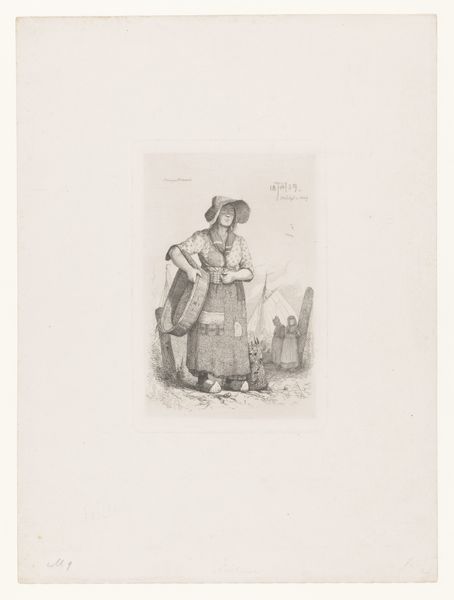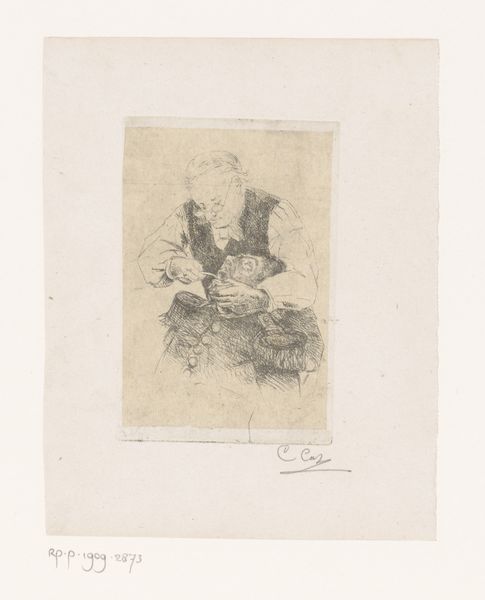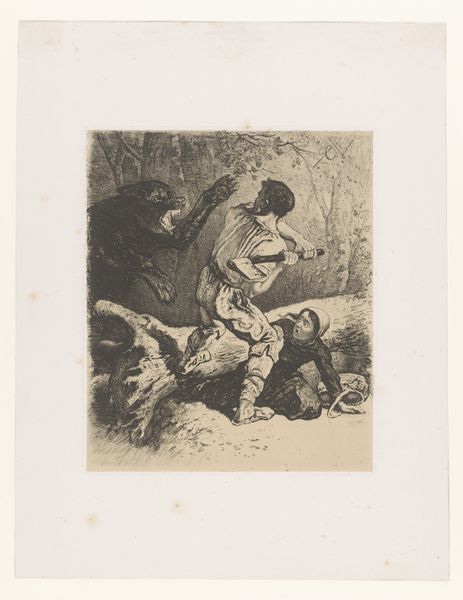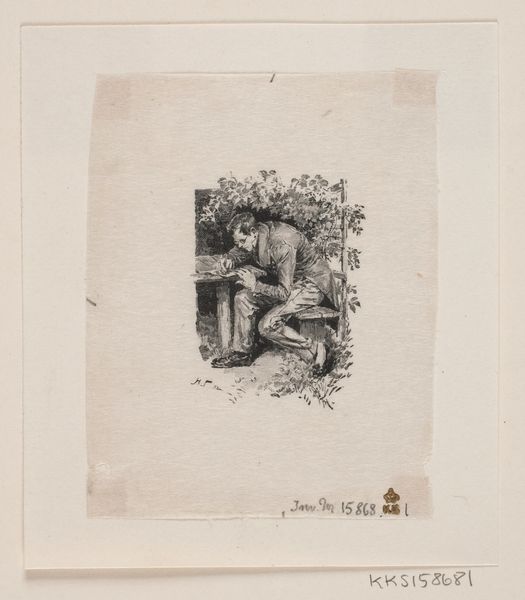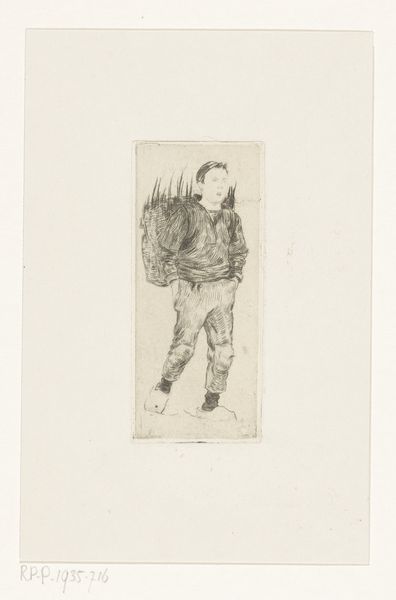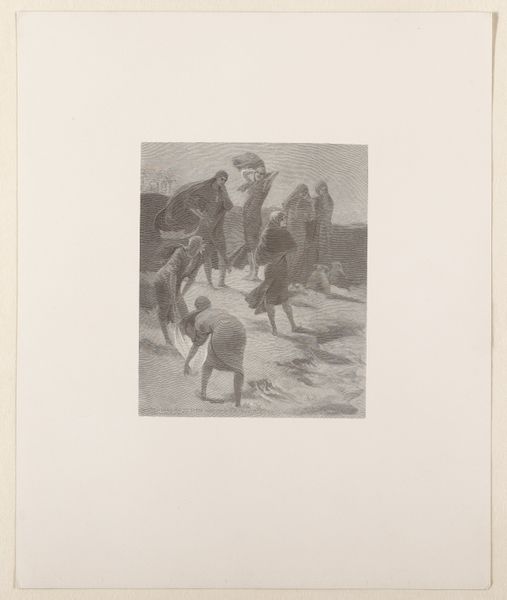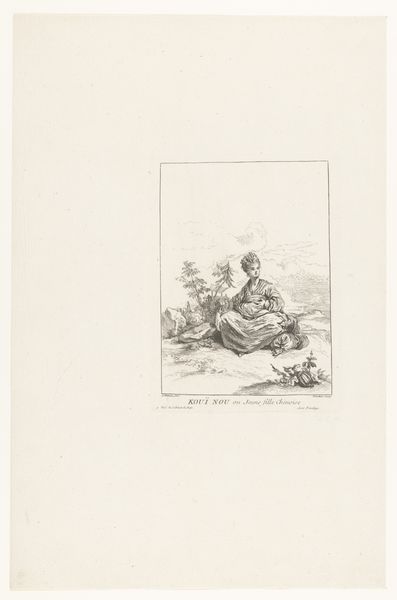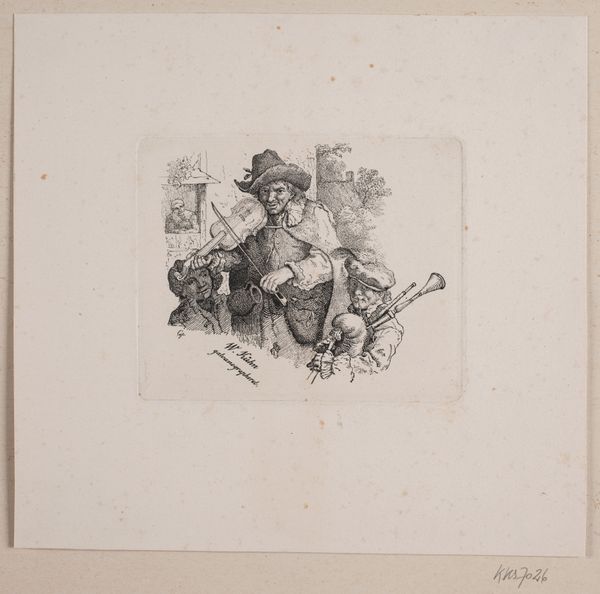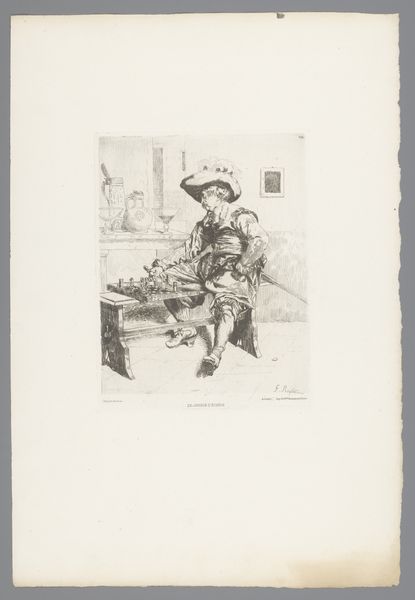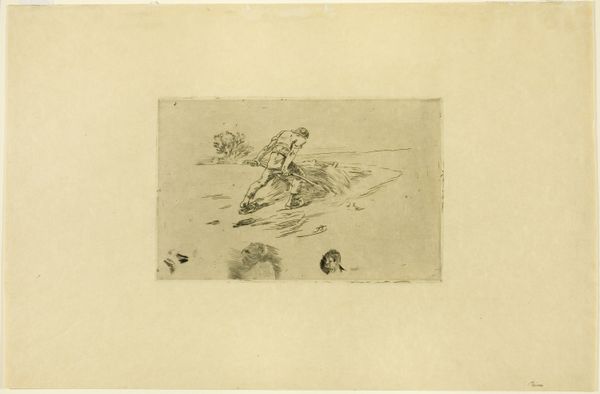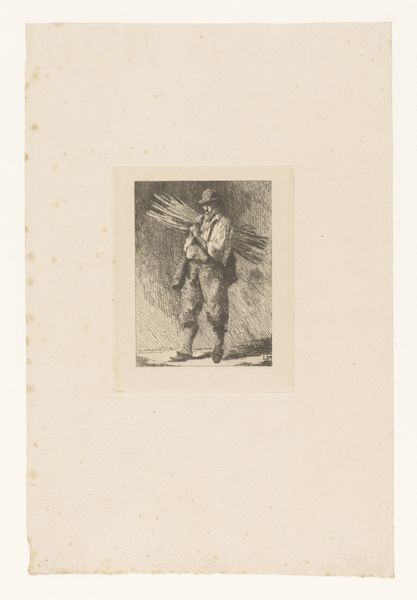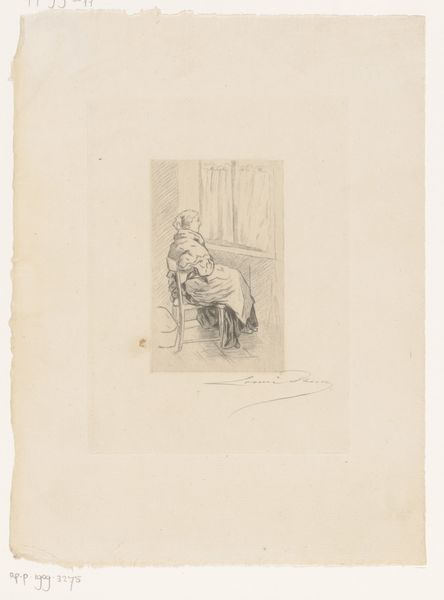
print, etching
portrait
etching
genre-painting
Dimensions: height 210 mm, width 147 mm
Copyright: Rijks Museum: Open Domain
Curator: Ah, another soulful glimpse into the late 19th century. This etching, titled "Zeeman of visser aan boord van een schip," created by Léon Brunin in 1882, presents us with a weather-beaten seaman on board his vessel. Editor: My first impression is one of loneliness and resignation. Look at how his eyes seem to stare beyond us, reflecting maybe the vastness of the ocean...or a hard day at sea. The subdued tones amplify that sense of quiet solitude, almost melancholy. Curator: Yes, but observe how the texture enhances this emotional depth. The etching technique really highlights the roughness of his clothing and beard. It feels tangible, as if we could touch the harshness of his life. What can we glean, I wonder, about the material realities of his life? Editor: Exactly. Consider the socio-economic backdrop: etching, as a more accessible medium, democratized art. We see the image, and its material history tells tales of wider availability of such genre paintings for a growing market seeking to understand labour and trade in industrialising Europe. Curator: That's such an interesting consideration. To me, his very posture speaks to weariness; notice how his arms are crossed so casually yet convey something almost impenetrable, a lifetime lived. He looks very weary, and at the same time his very placement—right in the center—feels quite imposing, doesn’t it? Editor: And yet, I can't ignore the objects surrounding him: fishing hooks, his hat. Each speaks of tools and toil, daily struggle—they are evidence, no, *witnesses* of his hard labour. Curator: True. Those small details definitely enrich the narrative. You see them scattered, yet arranged intentionally as though capturing the simple details that compose the rhythm of existence on the sea. Editor: Which makes us reflect, does it not? Is there beauty in a material existence that is about labor? In this case it forces an examination, especially when art can turn human struggle into aesthetic value. Curator: Indeed. In our era of accelerated automation, the print certainly invites contemplation on the meaning of craftsmanship. How much can we glean from such glimpses of workers' everyday routines. Editor: I feel now like this small etching gives enormous pause: about working, living and feeling that vast solitude together with a late 19th century sailor, and seeing our relationship to the making and trade.
Comments
No comments
Be the first to comment and join the conversation on the ultimate creative platform.
